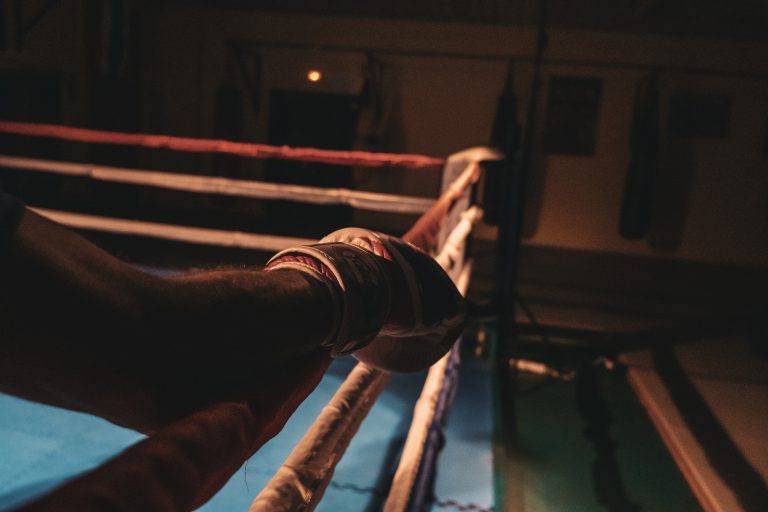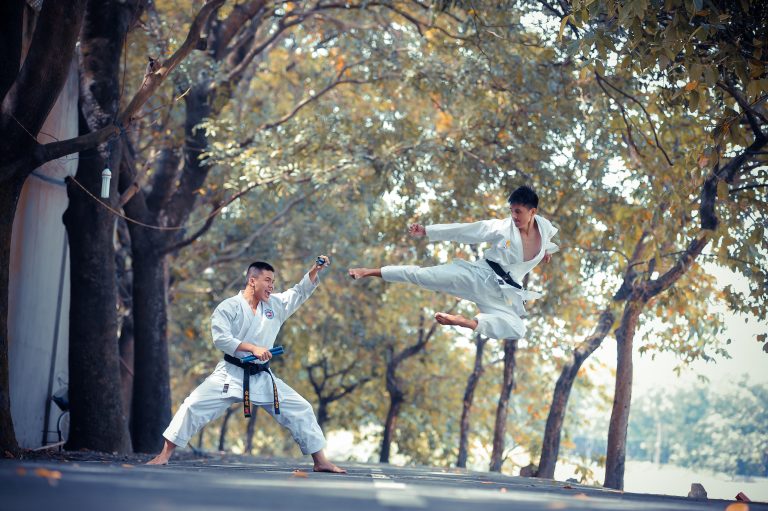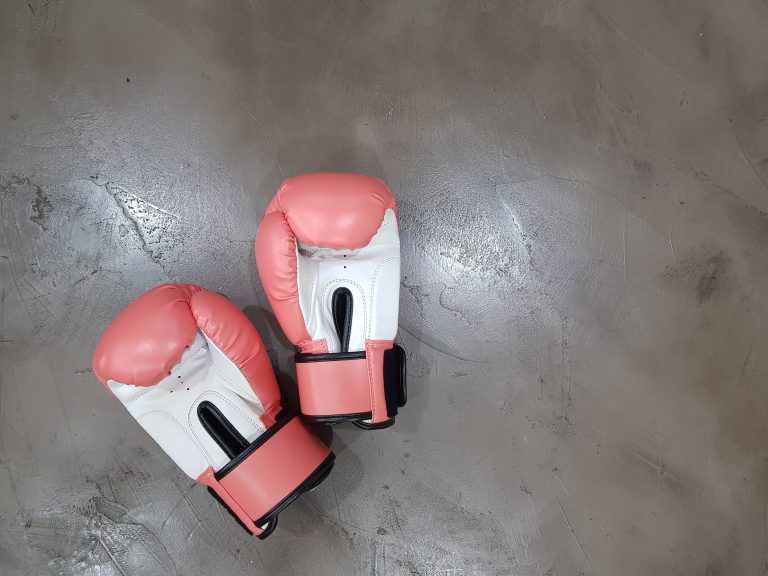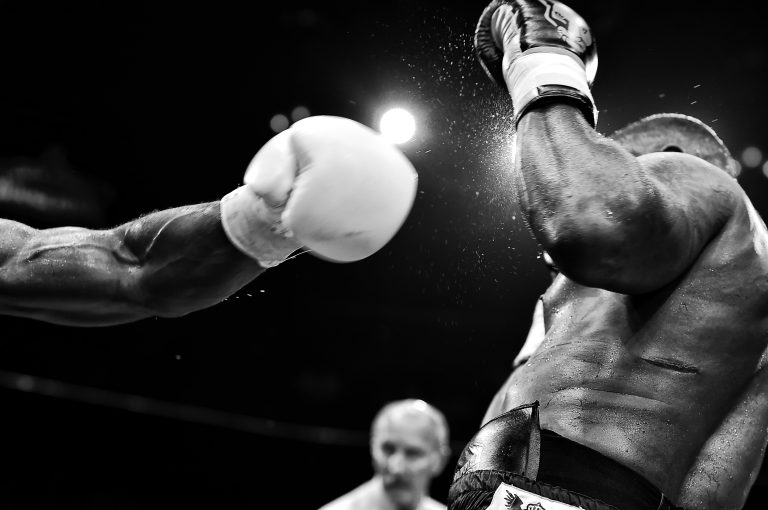The Karate Black Belt Ranking System: An In-Depth Guide
Karate is an ancient martial art that originated in Okinawa, Japan, during the Ryukyu Dynasty. Today, it is a popular form of martial arts that has gained international recognition. Karate is not just about learning self-defense techniques, but also about discipline, respect, and personal growth. One of the most sought-after accomplishments in karate is achieving the coveted status of a black belt. In this article, we will explore what the karate black belt ranking system is, how it works, and what it signifies.
Understanding Karate Belt Colors and Levels
Karate employs a colored belt ranking system where students move up the ranks by mastering the techniques, discipline, and philosophy of the art. The karate belt colors are as follows:
– White belt: It symbolizes purity, innocence, and a beginner’s mind. It is the starting point for every student who joins a karate dojo.
– Yellow belt: It represents the first step towards achieving higher levels of proficiency. Students learn basic techniques and principles.
– Orange belt: It signifies warmth and enthusiasm. Students learn more complex moves and develop better control over their bodies.
– Green belt: It symbolizes growth and progress. Students begin to master the art and develop more profound knowledge and understanding.
– Blue belt: It represents stability and constancy. Students learn how to combine different techniques more fluidly.
– Brown belt: It signifies solidity, rootedness, and earthiness. Students reach advanced levels and focus on perfecting their skills and techniques.
– Black belt: It is the ultimate goal in karate. Achieving a black belt takes years of hard work, dedication, and commitment. It signifies the highest level of proficiency and mastery in the art.
What Does Reaching Black Belt Signify?
Earning a black belt in karate is a significant accomplishment that requires years of dedication and discipline. It represents the pinnacle of achievement and signifies the highest level of proficiency in the art. But what does it mean to be a black belt in karate?
In essence, earning a black belt signifies that a person has reached a level of proficiency where they can apply the techniques and principles of karate effectively. It also means that they have internalized the philosophy of karate and understand the importance of discipline, respect, and humility. A black belt in karate is not just a physical accomplishment but also a mental and spiritual one.
How Long Does It Take to Earn a Black Belt in Karate?
The time it takes to earn a black belt in karate varies depending on the individual’s effort, dedication, and natural ability. Typically, it takes between five to seven years to earn a black belt in karate. However, this timeline can vary depending on the style of karate, the intensity of training, and the instructor’s requirements.
Black Belt Dan Ranks
While earning a black belt is a significant accomplishment, it is not the end of the journey. In karate, there are ten levels of black belt proficiency known as Dan ranks. These levels are:
– Shodan (1st Dan): This is the first level of black belt proficiency. It signifies a strong foundation in the art and the ability to execute techniques with precision and control.
– Nidan (2nd Dan): At this level, students begin to focus more on the mental and spiritual aspects of the art. They also become more proficient in weapons training.
– Sandan (3rd Dan): Students at this level have become teachers and mentors to junior students. They are responsible for imparting their knowledge and skills to others.
– Yondan (4th Dan): At this level, students reach a level of mastery in the art. They are responsible for creating their own techniques and styles.
– Godan (5th Dan): Achieving a fifth dan is a significant accomplishment that signifies a higher level of mastery in the art.
– Rokudan (6th Dan): At this level, students begin to explore the deeper philosophical aspects of the art. They also become accomplished in the use of traditional weapons.
– Shichidan (7th Dan): Students at this level are considered grandmasters of the art. They are responsible for teaching and preserving the traditional aspects of karate.
– Hachidan (8th Dan): This level represents a lifetime of dedication and commitment to the art. Students at this level are true masters of karate.
– Kudan (9th Dan): Achieving a ninth dan is a rare accomplishment that signifies a lifetime of dedication and commitment to the art.
– Judan (10th Dan): This is the highest level of proficiency in the art. Only a select few individuals have ever achieved this level.
The Karate Black Belt Ranking System: Most Frequently Asked Questions Answered
Karate is a martial art that has become a popular form of self-defense and physical training across the world since its origin in Japan. The Karate ranking system is an essential aspect of the martial art, providing practitioners with clear goals to work towards and a sense of progression in skill and knowledge. However, understanding the Karate belt ranking system can be confusing for beginners or for those new to Karate. In this post, we will answer some of the most frequently asked questions regarding the Karate black belt ranking system.
What is the Karate Black Belt Ranking System?
The Karate black belt ranking system is a hierarchy of skill levels that practitioners work through to advance in their training. Traditionally, there were no colored belts in Karate, and only the black belt was used to signify mastery of the martial art. However, as Karate became more popular, colored belts were introduced to create a more structured system of progression.
What is the significance of the different colored belts?
Each colored belt in Karate represents a particular level of skill and knowledge. While the specific order and color of belts may vary depending on the different Karate styles, the general progression is as follows:
– White Belt: The white belt represents a beginner’s level of training and signifies the beginning of the Karate journey.
– Yellow Belt: The yellow belt represents a basic understanding of Karate techniques and the beginning of self-development and mastery of the body.
– Orange Belt: The Orange belt indicates that the practitioner is now able to perform basic Karate techniques with power and speed and shows that the student is making progress.
– Green Belt: The green belt represents increased proficiency in Karate, including a broader knowledge of techniques and more sophisticated training.
– Blue Belt: The blue belt symbolizes further development in Karate, with the practitioner demonstrating an understanding of the more complex techniques and greater physical and mental ability.
– Brown Belt: The brown belt represents mastery of Karate, with the practitioner demonstrating an advanced understanding of techniques and the ability to apply them effectively under pressure.
– Black Belt: The black belt signifies the highest level of achievement in Karate, representing mastery of the art and a commitment to lifelong learning and development.
How long does it take to reach the level of a black belt in Karate?
The time it takes to reach the level of a black belt in Karate varies significantly depending on the individual practitioner and their Karate style. Some people may take as little as three years of intensive training, while others may take up to a decade or more of consistent training. It is important to remember that the Karate black belt ranking system is based on merit and skill, and not solely on the amount of time spent training.
Do I need to have any prior experience to begin practicing Karate?
No, you do not need any prior experience to begin practicing Karate. Karate is suitable for people of all ages and levels of fitness, and classes are generally designed to accommodate beginners. However, it is always wise to speak to the instructor before starting classes to discuss any particular needs or concerns you may have.
Why is the black belt considered the ultimate goal in Karate?
The Karate black belt is considered the ultimate goal in Karate because it represents mastery of the art and a commitment to lifelong learning and development. The black belt is not the end of the journey, but rather the start of another one as the practitioner continues to strive for perfection. It is a symbol of humility and recognition that there is always more to learn, and that the journey of self-improvement continues beyond the conferring of the black belt.
Karate Black Belt Ranking System: A Step-by-Step Guide
Karate is an ancient martial art that has been practiced for centuries. It originated in Okinawa, Japan and has since evolved into a global sport. Karate is famous for its unique ranking system, which uses colored belts to signify a student’s level of proficiency. The ultimate goal of any karate student is to attain a black belt. In this guide, we will provide a step-by-step breakdown of the karate black belt ranking system.
Step 1: Begin Your Training
Before embarking on the journey towards a black belt, you need to start by finding a certified karate instructor or dojo. Look for an instructor who is affiliated with a reputable karate association. This will ensure that your training follows a structured and standardized curriculum.
Step 2: White Belt
The white belt is the starting point for all beginners in karate. It represents a blank slate, and as such, symbolizes the willingness to learn. During this stage, you will learn the fundamental techniques of karate, including punches, kicks, and strikes. The duration of the white belt stage varies across different karate schools, but it typically lasts anywhere between three and six months.
Step 3: Yellow Belt
After mastering the basic techniques, you will be promoted to the yellow belt. This stage is a sign of progress, as you have successfully acquired a level of understanding in karate. You will continue to build on the skills learned during the white belt stage while also being introduced to new techniques. The yellow belt stage also takes approximately three to six months.
Step 4: Orange Belt
Upon passing the technical requirements of the yellow belt, you will be ready for an orange belt. This level represents the dawn of a new day, as you enter into the intermediate stage of karate. At this point, you should begin practicing more complex techniques and combinations, learning the names of kata techniques, and developing a deeper understanding of karate principles. The orange belt stage is typically six to nine months in duration.
Step 5: Green Belt
The next level in the karate black belt ranking system is green belt. This stage is where you begin to demonstrate a level of proficiency in karate. You will need to exhibit mastery of all the techniques learned so far, including kata sequences that involve multiple movements. The green belt stage can last anywhere from nine months to a year.
Step 6: Blue Belt
After mastering the green belt requirements, you will be ready for the blue belt. This level represents the sky and symbolizes the vastness of knowledge you have yet to attain. You will be required to learn advanced techniques and demonstrate a high level of proficiency in defense and offense. The blue belt stage takes approximately a year to a year and a half.
Step 7: Brown Belt
The brown belt is a significant milestone in the karate black belt ranking system. By this stage, you will be considered an advanced student and will have a comprehensive understanding of karate. You will be required to learn complex techniques and engage in sparring and defense against multiple opponents. The brown belt stage takes approximately two years to complete.
Step 8: Black Belt
The black belt is the highest level in the karate black belt ranking system. Reaching this level requires years of dedicated practice and perseverance. You will need to demonstrate a deep understanding of karate principles, techniques, and philosophy. The black belt stage encompasses all of the knowledge acquired during the previous stages and requires a mastery of all the techniques. The duration of the black belt stage may vary, but it typically takes at least three years to become a first-degree black belt.
Conclusion
The karate black belt ranking system is a testament to the dedication and effort required to master this ancient martial art. Following the steps outlined in this guide will provide you with a structured approach to your training and will help you to achieve your goal of attaining a black belt. Remember to train hard, stay focused, and maintain a strong sense of discipline throughout your journey towards a black belt.
Inhaltsverzeichnis






